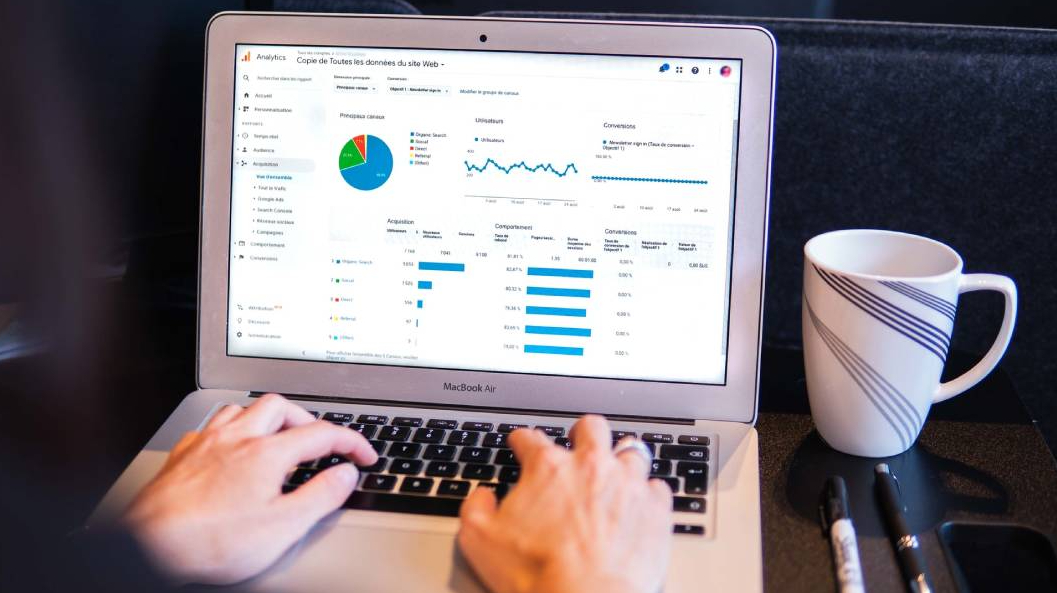A topic that is hugely important for any marketer is that of targeting – making sure your budget gets spent on the people most likely to buy from you. Yet most marketers I speak to at events are unaware of the options available to them, and are unfortunately still wasting a lot of their click spend on irrelevant people who simply don’t convert.
A topic that is hugely important for any marketer is that of targeting – making sure your budget gets spent on the people most likely to buy from you.
With all the features available to us across digital advertising platforms, we’ve never had it so good.
Yet most marketers I speak to at events are unaware of the options available to them, and are unfortunately still wasting a lot of their click spend on irrelevant people who simply don’t convert.
In this article, I will explore how to carry out advanced audience targeting in Google Ads, which features you can use to make your marketing budget work a lot harder, and how to use them.
What are Search Audiences?
Let’s start with what Google has to say:
“Audiences are groups of people with specific interests, intents and demographics, as estimated by Google. You can select from a wide range of categories – such as fans of sports and travel, people shopping for cars, or specific people that have visited your site.”
In other words, audiences are a way for you to narrow down who sees your ads or observe how particular sets of users perform on search activity. This means you can focus on getting your ads in front of the right people. Not only this, but having more audience data at your disposal allows you to craft more relevant ads, landing users on more personalised pages and drive overall performance.
Google’s Audiences are a powerful tool for anyone using paid ads and can help your ads reach their full potential.
We’re going to explore the different types of audiences you are able to use and how we can use these with different campaigns. Let’s dive right in!

There is a wide range of different Google Ads Search Audiences to choose from. It’s important that you choose the most relevant type of audience for the campaign you’re running.
So, let’s take a look at the different types of audience you can choose from…
Search audiences
When you talk about Ads and/or PPC, most people first think of search ads, so we’ll also start there. The audience options on the Google Search Network are a good place to begin thinking about how you will adapt spend towards the people most likely to purchase or inquire.
These days it isn’t as simple as choosing a suitable bid for any given keyword. For half a decade we have been able to use bid modifiers to optimize the best performing parts of an account and automatically spend more money there. Advertisers can automatically weight budget and bids depending on a few criteria:
- Location
- Device type
- Time (which can be the time of day, or the day of the week)
You can ask Google to apply a higher bid of up to 300% more than you would normally spend if certain criteria are met, or reduce bids by up to minus 100% (i.e. turn it off).
I am yet to meet a business that can’t improve their PPC spend by considering these factors.
Ask yourself questions like:
- Does the location of where a search is made influence the likelihood of conversion?
- Is someone using a mobile device worth more or less than someone on a desktop?
- Are you happy spending as much on traffic during the evenings as you are during the day?
One way or another, each of these should influence how you spend your money.
As an example, if you are a retailer with high-street stores and an ecommerce site, then bid adjustments need serious consideration.
If someone is searching on their phone, within walking distance of one of your stores during opening hours, then they are probably worth bidding more for. Send them into the store where they will probably have a higher average spend than they would online.
If you take away one of those factors (it’s now an out of hours search, or they are on a desktop at home) then lower the bid and send them to the ecommerce site.
It is important to understand the difference in value for each type of search and reflect that in your bidding strategy.
A more recent addition to this is demographic bidding. You can now also choose to modify bids depending on:
- Age
- Sex
Is your target market younger males? Then bid more for them, and lower bids if searches are performed by females or older people. This allows you to bid on more broad keywords that you may have avoided before, as you can be more certain of the person clicking.
For example, a clothing company targeting men can bid on broad keywords like “skinny jeans”, which would traditionally have attracted more clicks from females, but that audience can now be excluded.
Display audiences
Before looking at the really interesting audience targeting options here, I want to talk about the basics.
Even though a frankly outrageous sum of money gets spent on Google search ads every single day, people don’t actually spend that much time searching. We spend the majority of our time online doing other things like reading news articles and special interest blogs, watching videos, chatting in forums etc.
PPC advertisers can also use Google Ads to appear here, on the Google Display Network (GDN) with videos, banners, and text ads.
Targeting options are plentiful. To start, you can use Placements and Keywords. Placements are the websites you hand-pick for showing your ads, whereas keyword targeting is based on the text showing on web pages, which you might want to appear against.
Taking it a stage further, you can also bid demographically (not only sex and age, but on the GDN you can also choose parental status). This isn’t a situation where you have to choose one or the other; instead, you can layer these options to really refine your audience.
For example, if you are launching a new range of baby clothes, then you may choose to advertise to females who are in their 20s and showing as parents, choosing only to place adverts on baby-related websites and on pages where your competitors are named or where certain target words are present.
Affinity audiences
The first of the more advanced targeting options that you can choose to implement, as well as or instead of the above, is affinity audiences.
Google refer to these as “TV-like audiences” and they are based around topics of interest. Data is collected as users engage with pages, applications, channels, videos and content across YouTube and the GDN. This information is then collated and used to build a profile of who they are, and what advertisements can be tailored to their personality and preferences.
You should view an affinity audience as a group of individuals who have a general, long-standing interest in a specific subject.
As advertisers, we can take advantage of Google analyzing someone’s overall interests, passions and lifestyle to get a better sense of their identity. If you think about your browsing behavior, there will be certain themes and patterns that are easy to spot and brands can choose to advertise to you and everyone else with the same interests.
If the ready-made audiences like “beauty mavens” or “running enthusiasts” aren’t quite specific enough for you, then you have the ability to build your own.
Custom Affinity Audiences can be created, where you give Ads a list of keywords that detail the area of interest and also websites that would be frequented by your audience (authority news sites and strong rivals are good starting point) and then it creates a theme for you.
Detailed Demographic Audiences
Demographic targeting is the bread and butter of paid search audiences. It enables you to refine your targeting to specific people based on their demographical attributes.
These attributes include age, gender, and location. You can even dive a bit deeper and select people based on whether they are likely to own a home, be married or have children.
Demographics are a useful way of quickly narrowing down your target audience, and are best suited for products that don’t necessarily fall into a particular niche. Booster seats for children, for example, will likely be of interest to all parents, not just those with a specific interest in booster seats.
In-market audiences
Wouldn’t it be amazing if you knew someone was just about to buy a product in your market? Well now you can. Ads can qualify someone as being “in-market” for a specific product or service, i.e. they are further down the conversion funnel and are actively considered purchasing a product or engaging with a service that is similar to what you offer.
In-market audiences take into account clicks on related ads and subsequent conversions, along with the content of the sites and pages that a person visits, as well as the recency and frequency of the visits.
You should view in-market audiences as individuals who are temporarily interested in a specific segment. For example, if I am not a car enthusiast and I don’t read a lot of automotive publications then I won’t be in the automotive affinity audience, but for a short period of time, every once in a while, I would fit into an automotive in-market audience when making a new car purchase, showing this intent by researching and comparing cars online.
I often get asked how accurate this is and, from the campaigns we’ve run, we have seen good results. This is down to a lot of effort from Google where Ads examines repeated patterns of behavior, sets personalized algorithms and updates in real-time, so people not interested or who have already spent their money soon drop out.
Whilst you are able to target pre-defined in-market audiences, you may want to consider segmenting existing affinity audiences in order to re-engage with users already aware of your brand. This increases effectiveness and gives you full control of moving that user through the conversion funnel and toward your products or service.
At this point in the process, your marketing messages should showcase exactly what your brand has to offer and how it differs, alongside any promotions. Make use of all sales tools at your disposal here as these people are looking to spend now and may not be back for a while, if at all.
Seasonal In-market Segments
Seasonal segments are one of two new additions to Google Ads Search Audiences. It’s actually a sub-section of the In-market audiences we just covered. It enables you to apply a segment to target people who are researching seasonal deals.
Examples of seasonal deals include Black Friday and Boxing Day Sales. It also includes holidays such as Christmas and Valentine’s Day.
Seasonal segments can give your ad campaigns a big boost, particularly if you offer seasonal sales or discounts to compete more aggressively for a sale.
Life events
Very similar to in-market audiences is an additional type of targeting that came out last year – the ability to advertise to people just before or just after a few big events that take place in their lives. Namely:
- Graduating from college
- Getting married
- Moving house
Even though there are just three options to choose from, there are huge industries that surround each one. Take someone moving home, for example: there are property lawyers, estate agents, removal companies, furniture retailers, kitchen fitters, and many more that should all be considering this audience and factoring it into their advertising strategy.
Remarketing audiences
So, when you’ve done all of this work and now have all of these well-targeted people visiting your site, the sobering reality is that most of them still won’t do what you want them to.
The stats show that you should expect over 90% of people to leave your site without converting, 70% of people to abandon your shopping cart without purchasing, and 2-3 visits before someone crosses the line. You need to have a remarketing strategy in place to start turning these stats around and getting visitors back to convert.
Remarketing works after a cookie is placed into the browser of website users and it gives you the ability to show different ads to people depending on the actions they have (or often more importantly, have not) performed when on your site. It’s powerful – Google data tells us that people on one of your remarketing list are twice as likely to convert as a regular visitor.
To make the most of this, think about what you’d say differently to someone who purchased your most expensive product, versus someone who purchased your cheapest. For the former you may use ads to invite them into a VIP club or ask them to refer a friend, whereas the latter you may just try to upsell.
What about someone who abandons the shopping cart? Could you entice them back with a discount? In this situation you could even layer up your targeting with in-market audiences – when someone who previously visited but didn’t buy from you now shows signs that they are close to purchasing, it is time to bring out your strongest offer.
Remarketing Lists for Search Ads (RLSA)
When remarketing was first launched in Ads, it was available across the Google Display Network, but the search side of things was left out. However, a few years ago we saw the launch of Remarketing Lists for Search Ads (RLSAs), which allows advertisers to also remarket on the search network.
This opens up huge new options for advertisers, as you can display different ad copy and choose different bids and landing pages for your Google search ads if the people searching are on your remarketing lists.
A good example of how game-changing this can be is in the retail sector. If I have a shop that sells gifts online and want more purchases at Christmas, then traditionally I would have had to be very careful with the keywords I bid on, making sure I only cover searches specific to my products.
Broad keywords like “presents” and “gifts for men” ordinarily would not be profitable and would just burn through my budget. RLSAs let me target those keywords, only showing to people who had purchased gifts from me last Christmas.
As I know they are far more likely to convert, I can afford to out-bid the other advertisers and can write ad copy that rewards repeat custom. You can think in a completely different way and have the freedom to almost abandon traditional PPC rules when someone is on your remarketing lists.
Customer match
If you have a database of customers and prospects that you want to advertise to, perhaps to get them to repeat purchase, or to get them to actually purchase for the first time, then you can use Customer Match to speak to these audiences.
Your email lists can be uploaded into Ads and you can then approach these people in a similar way to how you’d remarket them. When they are logged in to Google you can show them unique adverts and use different bids across Search, Shopping, YouTube, and Gmail advertising.
The big win here is that it works cross-device, as people tend to be signed in to their Google accounts on phones, tablets and desktops. This is where remarketing often fails, due to the cookie being device- (and even browser-) specific.
This can be powerful for cross-selling (e.g. if someone bought a flight with you, use this to sell them car hire) and it is great for informing existing customers of new releases and any special limited-edition runs.
It is also quite a safe environment to test out new sales offers, as you already have a relationship of some kind with these people so can judge how well things are received here before rolling them out to unknown audiences.
Similar audiences
Remember that for remarketing to work really well, you need to be as granular as possible, meaning that by their very nature, the lists often aren’t huge. But if your remarking lists are performing strongly and you’d love the chance to have more traffic just like them, what can you do? This is where something called Similar Audiences comes into play.
If you have used lookalike targeting on Facebook or the prospecting tools within many of the programmatic platforms then this will be familiar. It’s where you ask Google to look at the audiences within your remarketing lists and go find more people just like them.
Available on both the search and display networks, this is a simple way to find new, prequalified users and often returns additional audiences around 5 times the size of your remarketing ones. It automatically updates, so when someone clicks on an ad and joins your site, they become a remarketing list member and are removed from the similar audience list.
Google data shows that brands typically experience a 41% uplift in conversions here. In our work for clients in retail and finance in particular, we’ve seen this go even higher.
Campaign or Ad Group?
Audiences can be applied to either your whole campaign or to each ad group. Your choice will largely depend on how you’ve set up your Google Ads account.
Generally, we recommend that you apply audiences at an ad group level. This provides much more granularity, enabling you to see what works best at a smaller scale.
It leaves room for experimentation, so you can try out different audiences and compare them to each other.
Targeting or Observation?
A very important setting to consider is whether you would like to exclusively target the audiences you’re applying, or if you would prefer to simply observe how that audience performs.
To clarify, you can either narrow down the people that will actually see your ad, or you can keep your audience broader but see how different audiences perform.
For example, if you wanted to only target users that Google identified as being ‘In-Market’ for ‘Business & Productivity Software’ AND are searching for ‘expense management software’, you would select the ‘Target’ option. If, however, you wanted to simply observe how these users perform versus the average audience, you would select ‘Observation’.

This setting applies for any audience that you overlay to search activity. Notice that in the example above Google has recommended that you choose the ‘Observation’ setting. This is because the ‘Targeting’ option would have limited your reach to only appear for the users in the audiences you apply.
Targeting is great when you have a defined audience in mind. If you’ve already done your market research, and you’ve tried and tested different audiences, then you can happily narrow it down at this point.
It’s worth noting that minimum audience sizes apply, as flagged by Google when your audience does not meet its requirements:
An audience list must have at least 1,000 active members for ads to show to the list on the Google properties (Search, YouTube, Gmail).
If you haven’t quite nailed down your target audience, then Observation provides a good way of testing different audiences, without putting all your eggs in one basket.
We recommend you run some Observation experiments first and identify which audiences work best. Then you can set a bid modifier for these audiences or even run campaigns Targeted to those audiences specifically.
Targeting is useful when you want to target people who’ve already visited your site with a specific ad or message, such as “Come back and complete your order to get 10% off” or when you need to narrow down your audience. We recommend using Targeting on your Display campagins.
Audience Insights From Existing Users
If you haven’t had a chance to see how audiences are performing across your historic search campaigns, do not worry! There are a few helpful ways to gain those insights and inform your strategy moving forward.
If you navigate to ‘Audience Tools’ in the Shared Library, and look under ‘Audience Insights’, you are able to dig deeper into the attributes that previous site visitors, converters, or even existing customers share.

In the screenshot above, you’re able to see what it might look like when taking a look at the demographics insights. It includes key information about your users, such as gender, age, parental status, location and the device they used. This tells you a lot about your current audience.
But you can actually dig a little deeper…

Under ‘Relevant Audiences’, we’re able to see what your users are in-market for, i.e what they are most often associated with. In this case, as you can see in the screenshot above, travel is the most common interest.
Start your audience strategy
If you are keen to try out these features but don’t know where to start, take a look in your Analytics data.
Begin to identify the types of people coming to your site and those that convert. Where are they located? What devices are they using? What times are conversions highest during the day or week?
Bring those themes into your search and display targeting and use the tools within Google Ads to find out where these people hang out online, what topics they are passionate about. Additionally, start thinking about how you’d show them different offers once they’ve already been to your site. You’ll be glad you did.
Conclusion
Choosing the right audience can make or break your ad campaign. The right audience means that you’re putting your ads in front of people who are likely to convert.
But bear in mind that different campaigns and networks will require different types of audience. There’s no one-size-fits-all approach.
The best way to determine which audience to use is to look at the Audience Insights and dig deeper into what your audience should look like. You can then run some experiments using the Observation method to see which audiences perform best.
Best of luck with your search audience investigations and implementations!





Leave A Reply